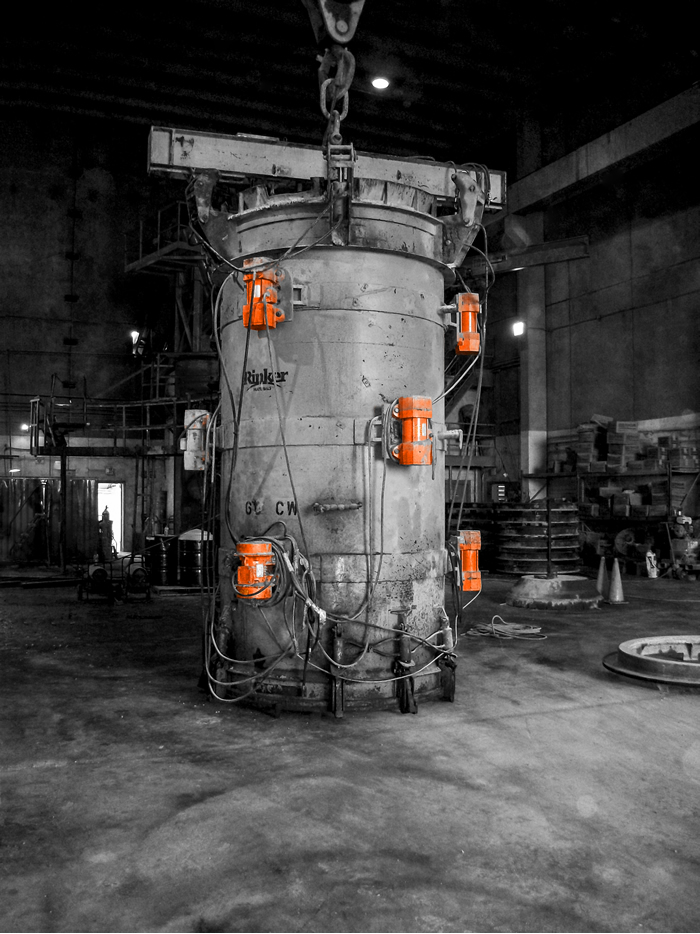Martin Engineering Introduces Cougar® Concrete Form Vibrators
Published: April 15th 2015
 [Peru, IL] – A global leader in industrial vibration technology has introduced a lineup of long-life vibrators for precast concrete applications, built with heavier-duty materials for internal components than most competing designs. Cougar® Concrete Form Vibrators from Martin Engineering utilize Class H windings and a rigid alloy frame to withstand maximum force output levels for longer sustained periods. Designed to replace current vibrators sold for these demanding applications, the units are engineered with external bolt patterns compatible with conventional form brackets, creating a secure fit that allows the concrete to settle quickly for even distribution without air pockets. The result is greater reliability and service life, for a lower overall cost of operation.
[Peru, IL] – A global leader in industrial vibration technology has introduced a lineup of long-life vibrators for precast concrete applications, built with heavier-duty materials for internal components than most competing designs. Cougar® Concrete Form Vibrators from Martin Engineering utilize Class H windings and a rigid alloy frame to withstand maximum force output levels for longer sustained periods. Designed to replace current vibrators sold for these demanding applications, the units are engineered with external bolt patterns compatible with conventional form brackets, creating a secure fit that allows the concrete to settle quickly for even distribution without air pockets. The result is greater reliability and service life, for a lower overall cost of operation.
“Most concrete form vibrators have class F windings with a lower temperature rating,” explained David Ruggio, Vibration Product Specialist at Martin Engineering. “Class H windings are able to withstand a higher internal temperature, allowing the units to run longer without having to be serviced or replaced as often.”
Housed in a totally enclosed, non-ventilated (TENV) case, the concrete form vibrators feature an electric rotary motor as large as 230-460 volts (3 phase / 60 Hz), running at 3,450 RPM and producing as much as 3,000 pounds (1360.7 kg) of force. While other manufacturers typically specify that vibrators should not be operated continuously at maximum output, Martin vibrators are rated for continuous duty at any setting. This is aided by the class H windings, which are triple dipped and shock resistant, able to operate under sustained high internal temperatures.
Units feature oversized, greasable roller bearings contained in sealed ductile iron housings. Rated International Protection Marking (IP) 66 and National Electrical Manufacturers Association (NEMA) 4, the seals are compliant with standards in both North America and Europe. Durable O-rings between the end caps and the housing retain the tight seal, even during pressure washing.
Versatility
“Large precast shapes put high demands on vibrators, due to the sheer size and weight of the forms required,” Ruggio pointed out. “In contrast, smaller operators can transfer a unit across many unique applications in a single day. The Cougar® product line includes devices covering either of those manufacturers’ specific needs.”
Higher weight vibrators set on permanent brackets are supplied with grade 5 mounting bolts and compression washers to ensure a secure fit. Portable units engineered for projects that require the device to be swapped among multiple forms can weigh as little as 20 pounds (9 kg). The fully transferable mid-sized unit features a handle with a wedge in back that slides snugly into a V-shaped bracket specially designed to withstand heavy forces. The electric 115V, single-phase/60 Hz motor can be run as fast as 9,000 rpm, delivering 1,600 pounds (725.7 kg) of force. An optional speed control knob allows operators to fine tune the vibrator for each specific application, with eccentrics adjustable from 0-100%.
Higher Standards
Designed and manufactured in Peru, Illinois, every vibrator goes through a two-tiered testing phase before final prep, as well as prior to shipping. This assures that the internal integrity and specified amplitude of each unit complies with the company’s tight tolerances. With major competitors located in Europe and Asia, the U.S.-based company retains a reputation for heavy-duty designs, personalized service, ready availability of parts and short turnaround on repairs.
“We listen to customers and design units to meet their needs,” Ruggio concluded. “Our philosophy is that, if we create the longest-lasting and most reliable product, the dividends will come in the form of customer loyalty.”